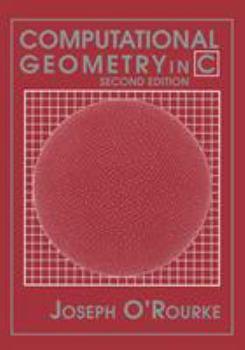Computational Geometry in C (Cambridge Tracts in Theoretical Computer Science)
Select Format
Select Condition 
Book Overview
This is the newly revised and expanded edition of the popular introduction to the design and implementation of geometry algorithms arising in areas such as computer graphics, robotics, and engineering design. The second edition contains material on several new topics, such as randomized algorithms for polygon triangulation, planar point location, 3D convex hull construction, intersection algorithms for ray-segment and ray-triangle, and point-in-polyhedron. A new Sources chapter points to supplemental literature for readers needing more information on any topic. A novel aspect is the inclusion of working C code for many of the algorithms, with discussion of practical implementation issues. The self-contained treatment presumes only an elementary knowledge of mathematics, but reaches topics on the frontier of current research, making it a useful reference for practitioners at all levels. The code in this new edition is significantly improved from the first edition, and four new routines are included. Java versions for this new edition are also available. All code is accessible from the book's Web site (http: //cs.smith.edu/ orourke/) or by anonymous ftp
Format:Paperback
Language:English
ISBN:0521649765
ISBN13:9780521649766
Release Date:October 1998
Publisher:Cambridge University Press
Length:392 Pages
Weight:1.65 lbs.
Dimensions:0.8" x 7.0" x 9.9"













